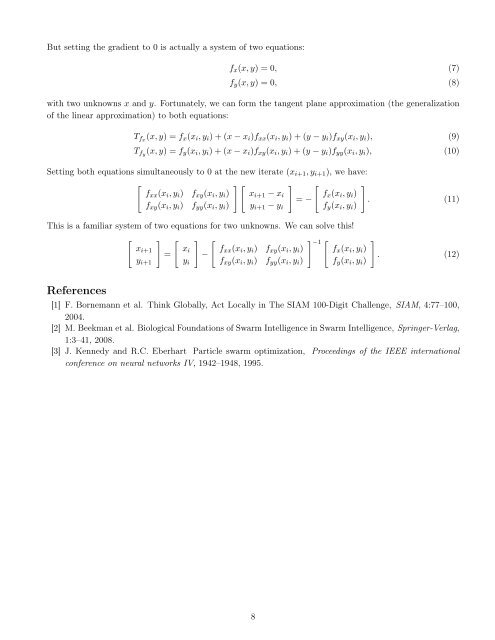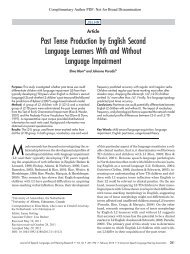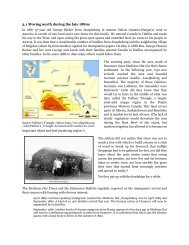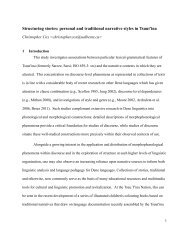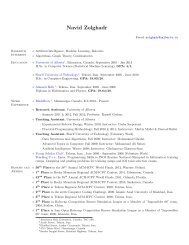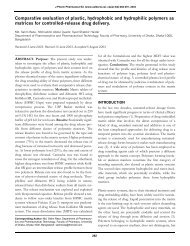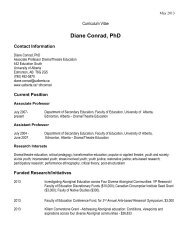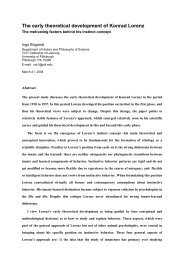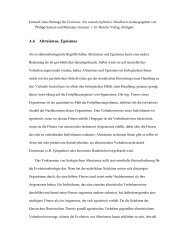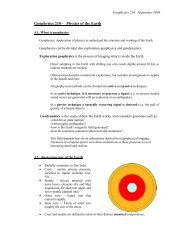MATH 209, Lab 5
MATH 209, Lab 5
MATH 209, Lab 5
Create successful ePaper yourself
Turn your PDF publications into a flip-book with our unique Google optimized e-Paper software.
But setting the gradient to 0 is actually a system of two equations:<br />
f x (x, y) = 0, (7)<br />
f y (x, y) = 0, (8)<br />
with two unknowns x and y. Fortunately, we can form the tangent plane approximation (the generalization<br />
of the linear approximation) to both equations:<br />
T fx (x, y) = f x (x i , y i ) + (x − x i )f xx (x i , y i ) + (y − y i )f xy (x i , y i ), (9)<br />
T fy (x, y) = f y (x i , y i ) + (x − x i )f xy (x i , y i ) + (y − y i )f yy (x i , y i ), (10)<br />
Setting both equations simultaneously to 0 at the new iterate (x i+1 , y i+1 ), we have:<br />
[<br />
] [ ] [ ]<br />
f xx (x i , y i ) f xy (x i , y i ) x i+1 − x i f x (x i , y i )<br />
= −<br />
. (11)<br />
f xy (x i , y i ) f yy (x i , y i ) y i+1 − y i f y (x i , y i )<br />
This is a familiar system of two equations for two unknowns. We can solve this!<br />
[<br />
] [<br />
x i+1<br />
=<br />
y i+1<br />
] [<br />
x i<br />
−<br />
y i<br />
f xx (x i , y i ) f xy (x i , y i )<br />
f xy (x i , y i ) f yy (x i , y i )<br />
] −1 [<br />
f x (x i , y i )<br />
f y (x i , y i )<br />
]<br />
. (12)<br />
References<br />
[1] F. Bornemann et al. Think Globally, Act Locally in The SIAM 100-Digit Challenge, SIAM, 4:77–100,<br />
2004.<br />
[2] M. Beekman et al. Biological Foundations of Swarm Intelligence in Swarm Intelligence, Springer-Verlag,<br />
1:3–41, 2008.<br />
[3] J. Kennedy and R.C. Eberhart Particle swarm optimization, Proceedings of the IEEE international<br />
conference on neural networks IV, 1942–1948, 1995.<br />
8


